Part 1 What is heliography? презентация
Содержание
- 2. What is it
- 3. Lavender oil distillation Why did photographers use it?
- 4. The answers What is a black sticky substance which is obtained from
- 5. An exposure time /time exposure an exposure of a photographic film for a relatively long period, usually a
- 6. Part 2 One of the earliest photographic processes In 1833,
- 7. The answers daguerreotype in British (dəˈɡɛrəʊˌtaɪp ) Camera obscura Latent image
- 8. What is it?
- 9. Sea salted water Why did photographers use it?
- 10. Part 3 Fill in the gaps with one word Hippolyte Bayard
- 11. The original part Hippolyte Bayard In July 1839, another Frenchman, Hippolyte
- 12. Part 4 Complete the text using the words William Henry Fox
- 13. The original part William Henry Fox Talbot Still in 1839
- 14. What is it?
- 15. Wax How did photographs use it?
- 16. What is it?
- 17. Gallic acid How did photographs use it?
- 18. A list of words to speak about the facts To produce
- 19. Part 5 How did John Herschell fix images? John Herschell
- 20. What is it?
- 21. photographic fix-bath
- 22. Part 6 Focal lenses! How dis they advance the process of
- 23. The original part Hippolyte Fizeau To reduce further the exposure
- 24. Part 7 What did they use instead of paper ?
- 25. The original part Abel Niépce de Saint-Victor To improve the
- 26. What is his job?
- 27. An optician - a person who makes lenses
- 28. Part 8 Scott Archer In 1851, an Englishman named Scott Archer
- 29. How did they manage to reach a quality unknown until then?
- 30. Collodion
- 31. Part 9 A real measuring device! What is it? Richard
- 32. What are they?
- 33. Gelatinized plates! What is special about them?
- 34. Part 9 The reproduction of colors Photography was still missing color
- 35. Colour reproduction To reproduce colours directly The first colour photograph
- 36. Part 10 Holography Use the verb in the correct form
- 37. The original part The physicist Gabriel Lippman received the Nobel prize
- 38. Скачать презентацию


























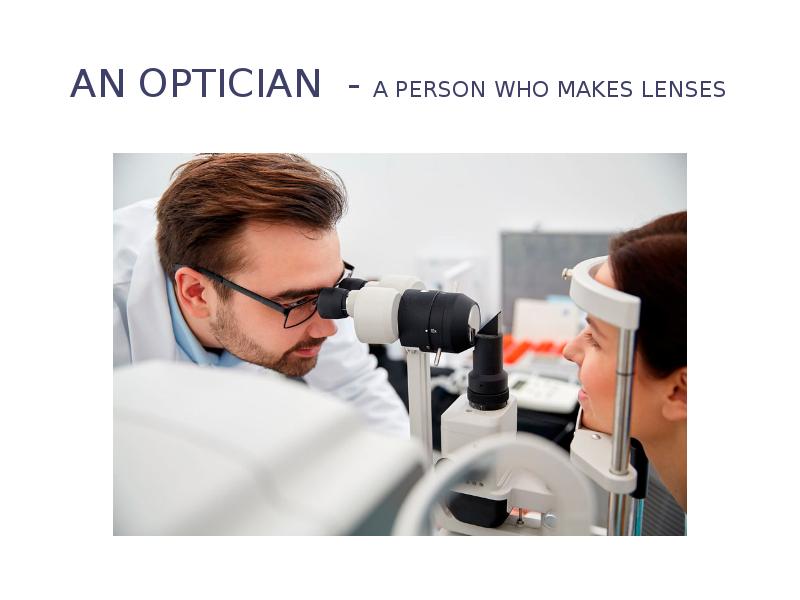
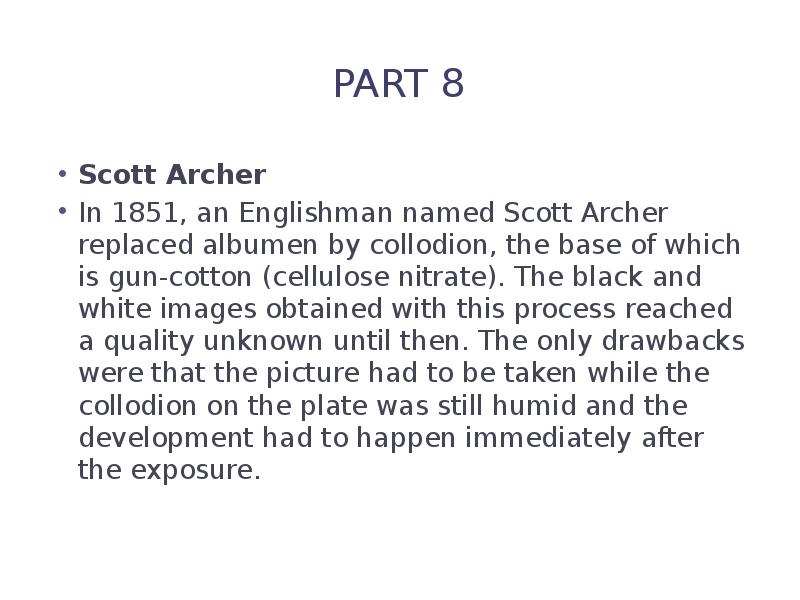
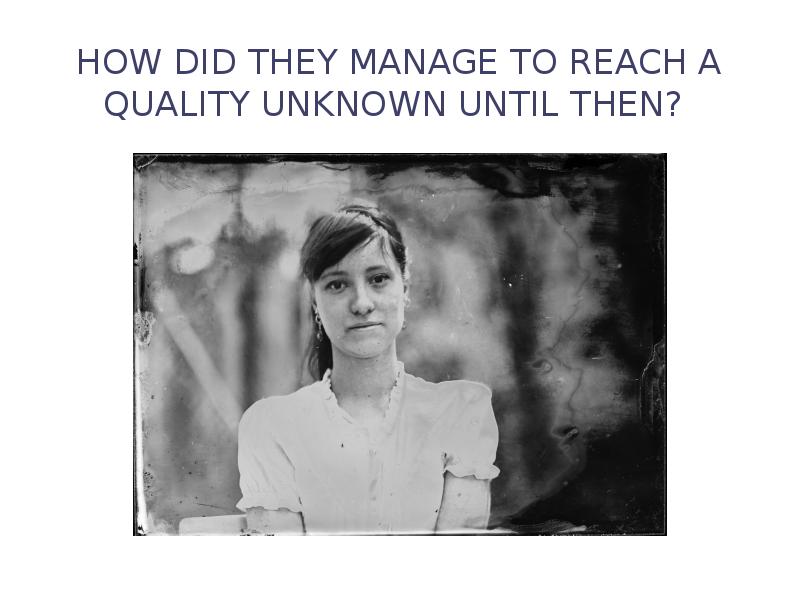

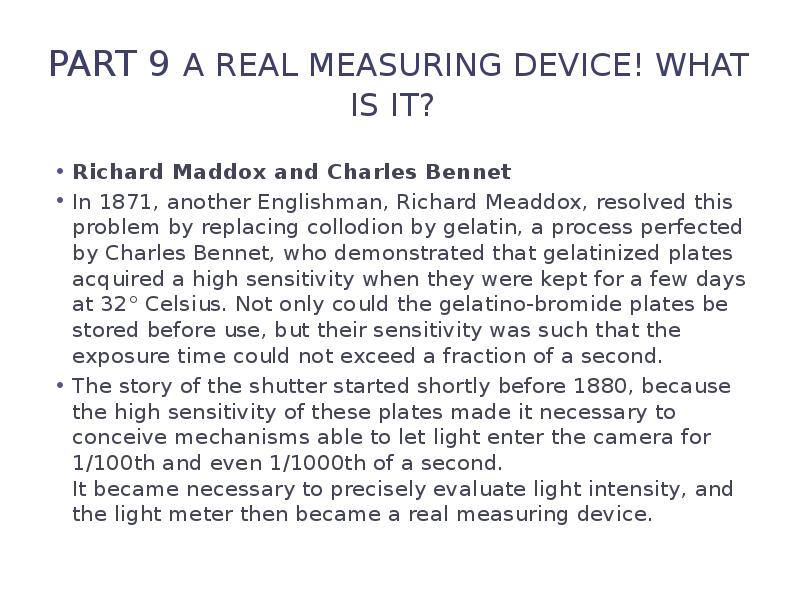


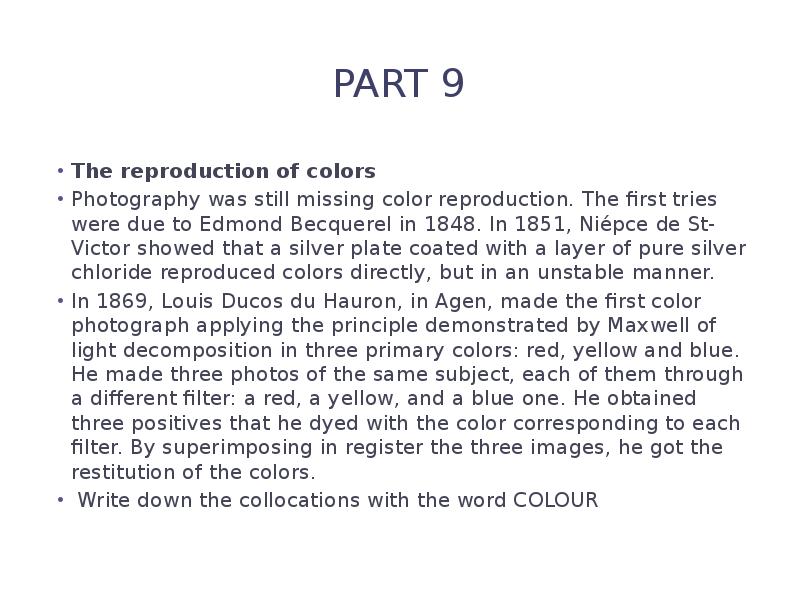
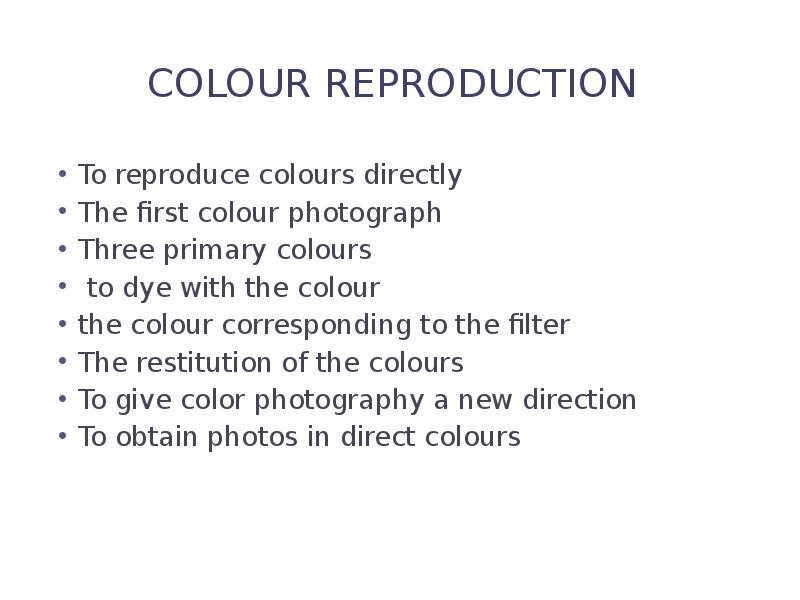
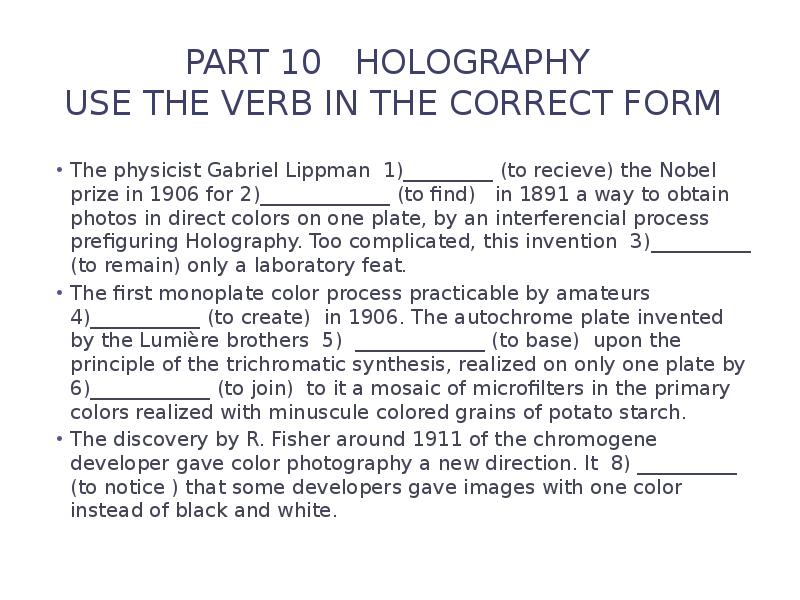
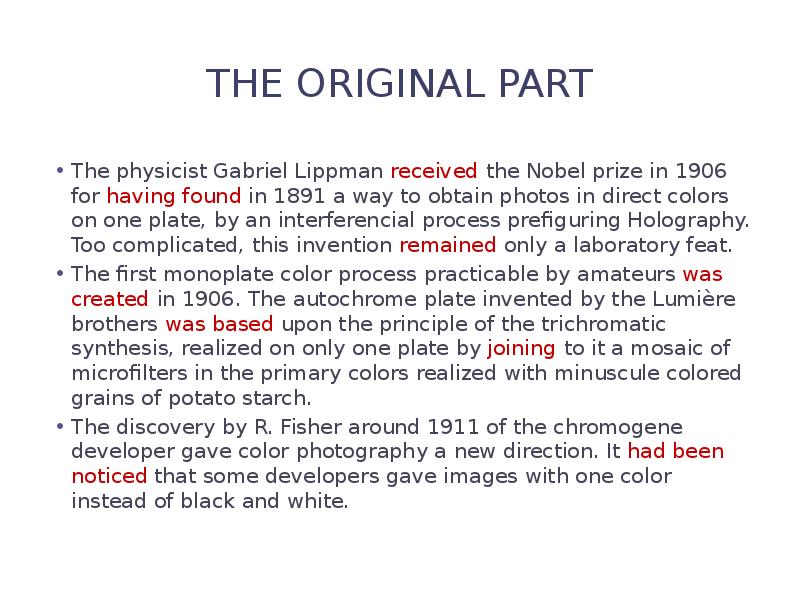
Слайды и текст этой презентации
Похожие презентации





























